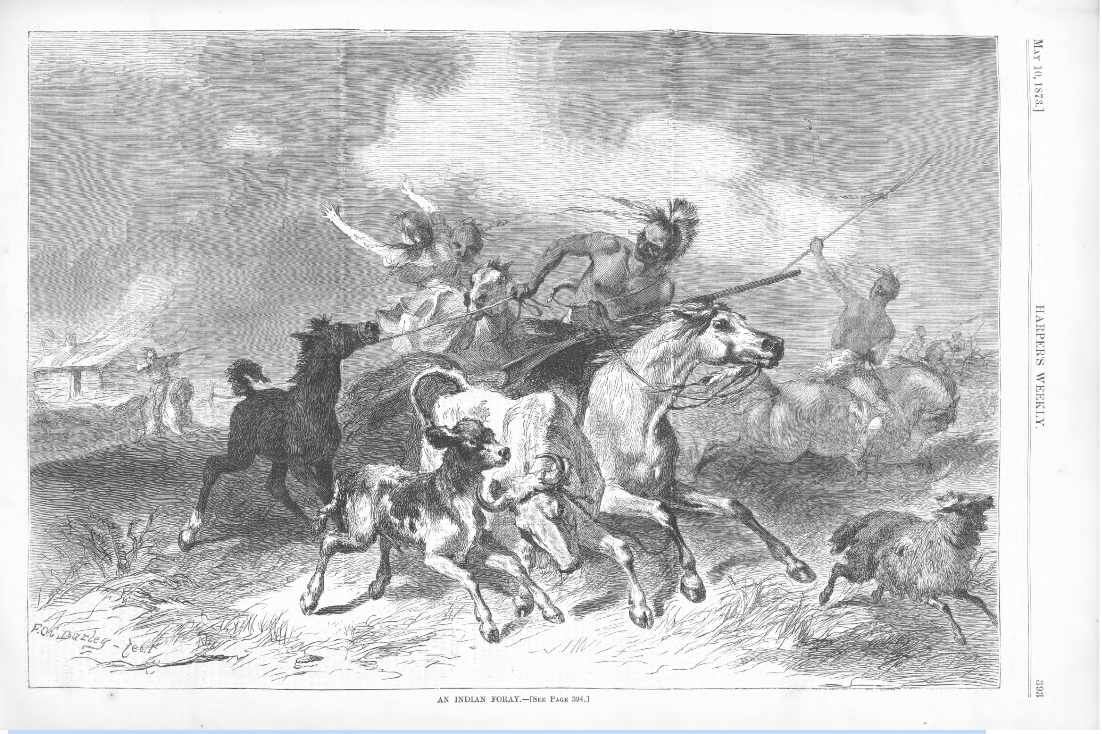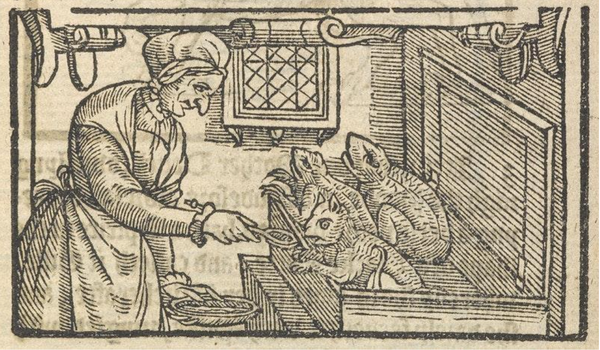Volume 1 of The Printed Past
The American West in Print: Paul Frenzeny and Jules Tavernier’s Journey for Harper’s Weekly
By Ava Hathaway Hacker
In 1873, Harper’s Weekly hired Paul Frenzeny and Jules Tavernier to travel west. The pair were meant to send back sketches illustrating the ongoing Westward Expansion for the magazine to publish widely.[1] Harper's Weekly, published by Harper & Brothers in New York City, had moved to the forefront of American publications with its Civil War reporting, popular not only for its journalistic articles but for its gripping illustrations.[2] Printed illustrations were still the only way to widely disseminate images in publication; after all, the first photograph would not appear in an American magazine until the year 1880. And it would still be more than forty years until photography became widely commonplace in magazines.[3] Hiring travelling artists to draw images of topical places, people, and events was still essentially the only way for a publication to feature pictorial representations of these subjects.
This was not a simple process. Harper’s Weekly used wood engraving as their print medium, and their travelling artists had to carry with them blocks of boxwood upon which the artist would sketch images in reverse (since the image would be flipped in printing) and then send them to the Harper’s Weekly headquarters in New York City to be engraved and printed. This method had been streamlined by the time Tavernier and Frenzeny set out, but it was still a process that required skillful coordination and a large number of workers behind the scenes.[4]
With the Civil War over, and as America moved into the 1870s, Harper’s Weekly turned its attention to a new focus: the American West. This was a subject of mass interest at the time, and one the editors knew would be popular with the magazine’s readers, many of whom would never themselves experience life on the much-mythologized “frontier.” In November 1873, Harper’s Weekly announced: “our artists, Messrs. Frenzeny and Tavernier, will tell the story of an extensive tour, commencing at New York and intended to include the most interesting and picturesque regions of the Western and Southwestern portions of this country. These gentlemen will not restrict themselves to the ordinary routes of travel. They will make long excursions on horseback into regions where railroads have not yet penetrated, where even the hardy squatter, the pioneer of civilization, has not yet erected his rude log-cabin; and the pictorial record of their journeyings will be a most valuable and entertaining series of sketches.”[5] By the time of this announcement, Frenzeny and Tavernier had already set out on their sketching journey and were more than four months into their trip.[6]
And who were Paul Frenzeny and Jules Tavernier? Harper’s Weekly’s announcement certainly painted an image of valiant adventuring artists, possessing not only artistic skills but the spirit of the archetypal rugged American adventurer of the West. In truth, however, both Frenzeny and Tavernier were Frenchmen who had moved to America in the late 1860s and early 1870s respectively. Both had served for the French military in the Franco-Prussian war, published works in Harper’s Weekly before, and found themselves in New York city in 1873.[7] At the outset of their venture West, Paul Frenzeny was in his early thirties, and Jules Tavernier was twenty-nine.[8]
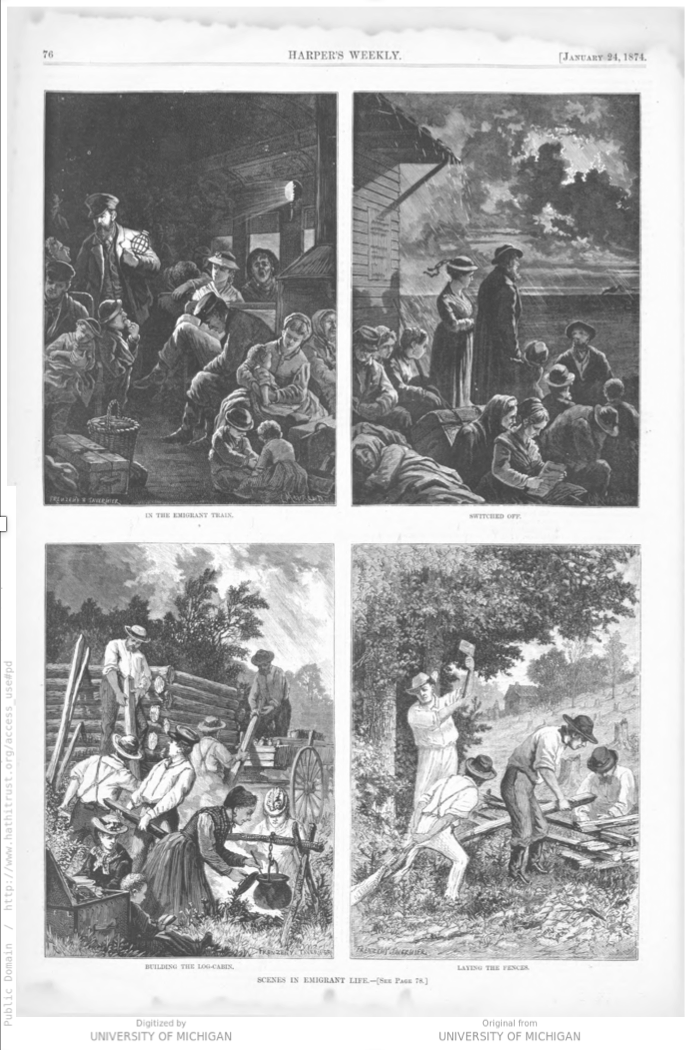
Fig 1. Paul Frenzeny and Jules Tavernier, “Scenes in Emigrant Life,” Harper's Weekly Volume 18, January 24, 1874, p. 76.
Their journey began on the trains. They left New York in July 1873 on the young transcontinental railroad, and this commencement gave the perfect opportunity for the men to chronicle the flood of emigration to the West that surrounded them.[9] One page of illustration published in January 1874 shows four scenes from the emigrants’ journey. These images revealed the harsh realism of the move West. “Switched Off,” for example, showed a common difficulty of travelling on the train, when the cars holding travelers would be “switched off” so that freight cars could take their place, forcing the emigrants to disembark and wait hours, out in the elements, to board again. Despite the representation of these hardships, there was a clear narrative to these images and the accompanying text, which stated, “the emigrants keep good-natured and hopeful, and cheer themselves with the brilliant visions they conjure up before them of the new homes they are going to found in the far West.”[10] Thus, the West and the opportunity for American self-determinism it promised was never far from even the more harrowing illustrations of the journey there.
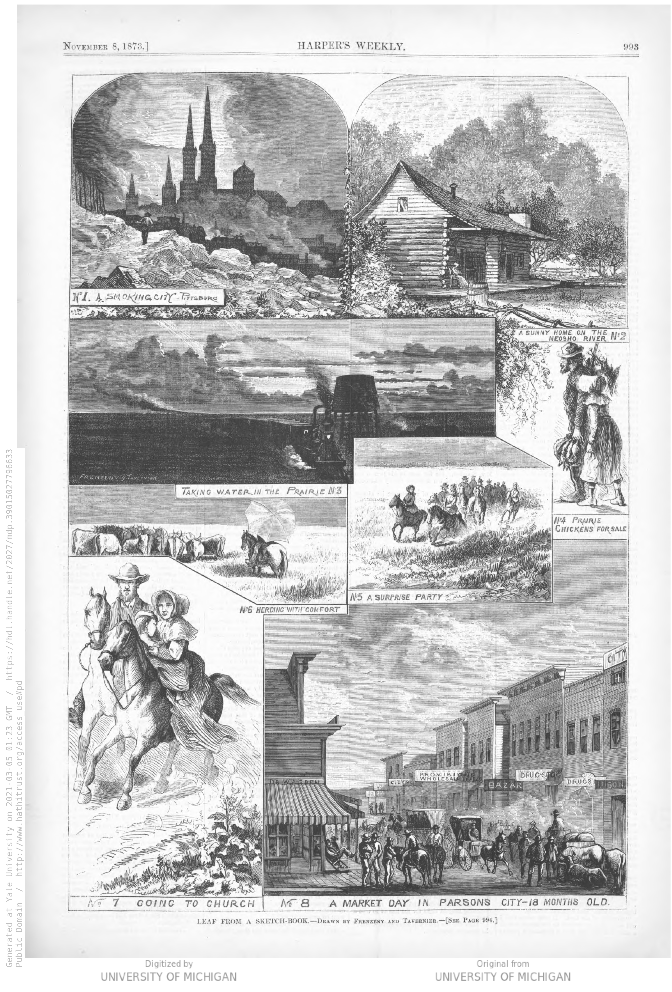
Fig. 2. Paul Frenzeny and Jules Tavernier, “Leaf from a Sketch-book,” Harper's Weekly Volume 17, November 8, 1873, p. 993.)
The men went on to document not only emigrant scenes and scenes from western settler town life (like the above page of illustrations from Parsons City, Kansas) but moments of encounter with the Native population of the West as well. Certainly, this would have been a topic Harper’s Weekly urged the artists to cover, given the dehumanizing fascination the Indigenous nations of the West held for the readership of the magazine and in popular culture as a whole. Frenzeny and Tavernier entered Oklahoma, often called “Indian Territory” at the time, in August 1873.[11] This area had been apportioned by Congress as a place to send the forcibly displaced tribes from the South and East, particularly the Cherokees, Choctaws, Chickasaws, Seminole, and Muscogees.[12] In Oklahoma, the men created this sketch page, showing various scenes they claimed to have seen, including a legislative session of various tribes of the area at Ocmulgee and a delegate of the Sacs and Fox Nation.
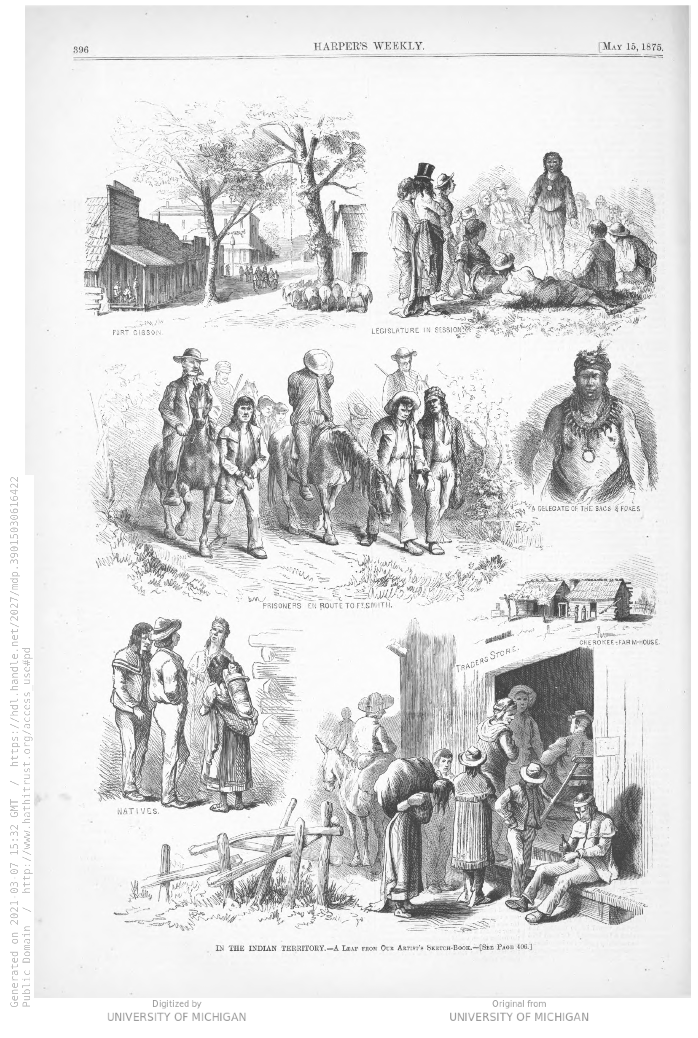
Fig. 3. Paul Frenzeny and Jules Tavernier, “In the Indian Territory.—A Leaf from our Artist’s Sketch-Book,” Harper's Weekly Volume 19, May 15, 1875, p. 396.
A full-page illustration, which Frenzeny made in Denver likely from accounts he had heard of rather than witnessed, was accompanied by text presenting a more overtly negative depiction of the Native populations.[13] “Our sketch represents an incident that took place during the march of a scouting column that left Fort Russell a few weeks since for Fort Laramie. On the march of ninety miles the brave boys in blue met many parties of refugees flying from the savage enemy. The cold was intense, forty degrees below zero, and the fugitives suffered the most cruel hardships. In our sketch the officer in command of the troops is gathering from a party of fugitives information concerning the whereabouts of the Indians,” his accompanying text read, highlighting the dramatic contrast between the “brave” soldiers and the “savage” native population.[14] This characterization was far from unusual for the publication, which was rife with the racist imagery and text that permeated much of print culture at the time.
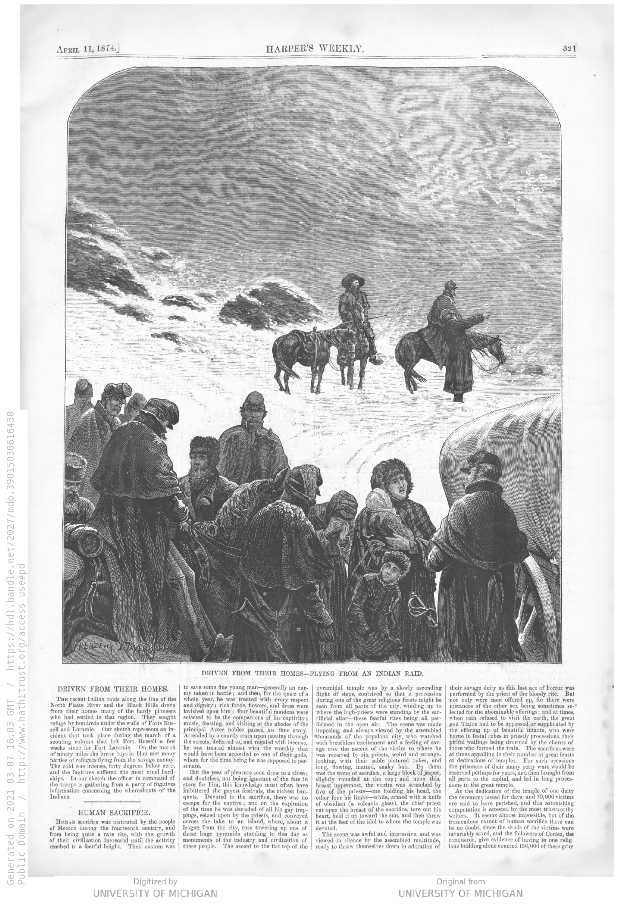
Fig. 4. Paul Frenzeny, “Driven from Their Homes—Flying from an Indian Raid," Harper's Weekly Volume 18, April 11, 1874, p. 321.
Frenzeny and Tavernier’s works did not take a solely antagonistic tone, however. They also presented struggles of the Native populations due to the settlers’ destruction of the buffalo population. Frenzeny identified this famine, rather than any inherent aggression of the Native populations, as the cause of the conflict in his later depictions of Mormon settlements made while he and Tavernier travelled separately before meeting back up again in San Francisco.[15] “Another evil arising from the destruction of the buffalo is the frequent Indian raids occasioned by the scarcity of game. Many tribes subsist almost entirely on buffalo meat, and when the destruction of the herds has driven them to the verge of starvation it is not surprising that they should make reprisals,” the text accompanying these illustrations read.[16]
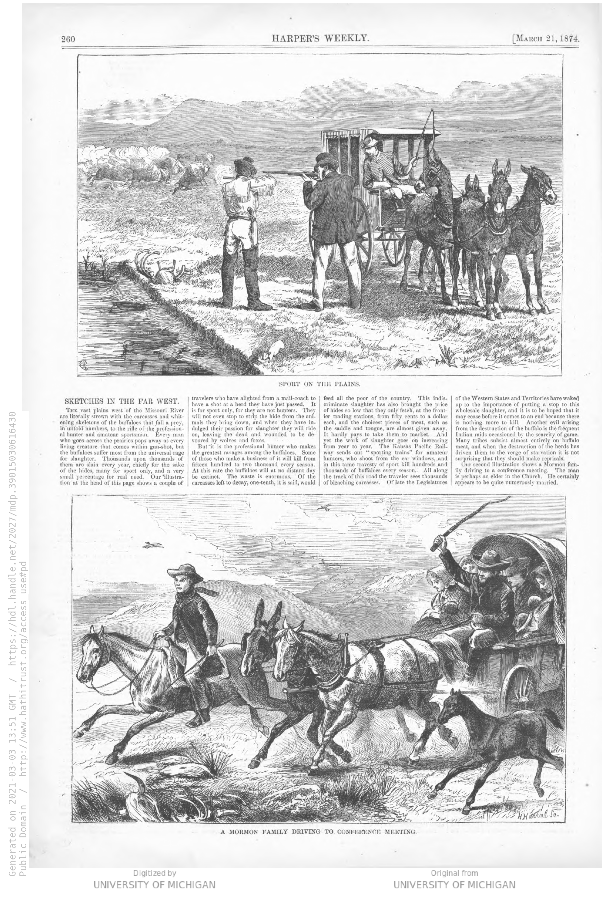
Fig. 5. Paul Frenzeny, “Sport on the Plains”; “A Mormon Family Driving to Conference Meeting," Harper's Weekly Volume 18, March 21, 1874, p. 260.
The closest encounter the men would have with Indigenous peoples would come from Tavernier’s time spent in Nebraska near the Red Cloud Agency. The Red Cloud Agency was one of the largest Native American agencies, with, at the time, between 9,000 and 13,000 members of the Sioux, Arapaho, and Cheyenne nations living in the vicinity. In 1874, Lieutenant William Harding Carter sought and gained permission for Tavernier to observe the “Sun Dance,” the annual spring solstice ancestral rite of the Sioux, Arapahos, and Cheyennes, a ceremony for which thousands of Native Americans would come together in the area.[17] Tavernier and the magazine that encouraged his outing was certainly capitalizing on the eastern American fascination with what to them seemed the “wildest” aspect of the West: the Native populations. “I am going to see Red Cloud, one of the biggest Indian chiefs, and two or three others, I will really see life in the wilds,” Tavernier wrote.[18] An image created from this venture, the full page illustration that would be published in January 1875, shows the “Sun Dance” and is accompanied by text reading “Our illustration shows the third and last day of the ceremonies, when the young warriors of the tribe undergo various self-inflicted tortures for the purpose of proving their powers of endurance—such as piercing the skin and sticking into the wounds pieces of wood to which stout cords running from the central pole are attached. The whole weight of the body is suspended on these cords, producing the most excruciating pain, which is borne not only without flinching, but with every manifestation of delight.”[19]
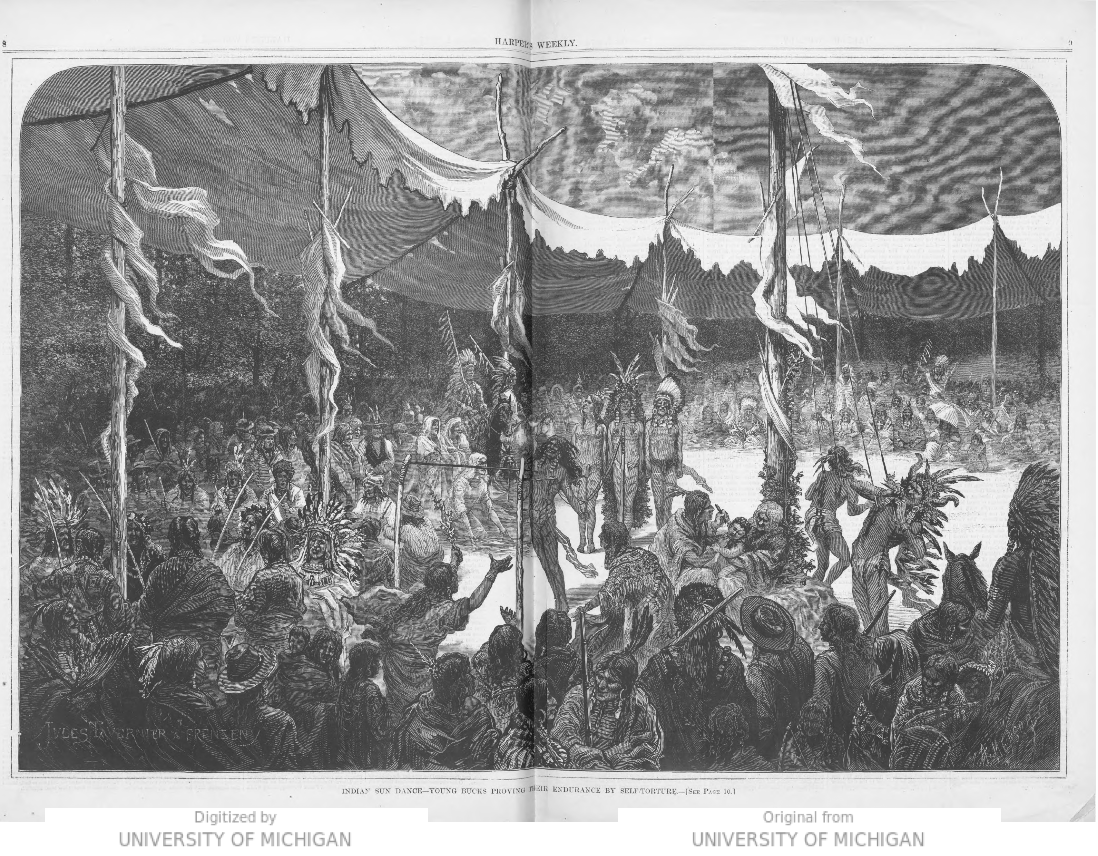
Fig. 6. Jules Tavernier, “Indian Sun Dance—Young Bucks Proving Their Endurance in Self-Torture," Harper's Weekly Volume 19, January 2, 1875, p. 8-9.
Just as important as Frenzeny and Tavernier’s illustrations and accompanying text itself in understanding how their account would have been perceived by its audience is the context in which the images from their journey appeared. The publication as a whole undeniably shaped the way that the reading audience would have viewed these “first-person” images and accounts. While Frenzeny and Tavernier’s depictions, biased as they were, might have at times acknowledged the struggles faced by the Native populations, Harper’s Weekly as a whole was overwhelmingly blatantly vilifying of Indigenous peoples.
In May 1873, the same year that the artists’ journey began, the image below appeared in Harper’s featuring the common, fear-mongering trope around Native Americans abducting white settlers, in particular women, in a rape terror fantasy with a clear argument behind it--the need to protect civilized society, embodied in the form of the vulnerable white woman, against the harsh barbarism of the “bloodthirsty savage.” Tales of Native American “savagery,” some claiming to be truthful accounts and some openly fictional, are far too numerous to detail here, even looking only at the 1873 and 1874 issues of Harper’s Weekly. An article from October 1873 entitled “The Indian Question,” for example, recounts the author’s supposed experience in the West, a story that is clearly fictional despite being posed as a real account, in which a Native American man, characterized by the author as a “demon...with a ferocity that reminded me of something terrible,” steals her beloved child. “I implored, I begged of him with streaming eyes. I besought him to think how unworthy a thing it was for a great chieftain, the head, no doubt, of a powerful nation, to torture a poor helpless woman,” the author writes, but it is no use, and a slightly different abduction narrative (civilized white goodness here embodied instead by a helpless child) is completed.[20]
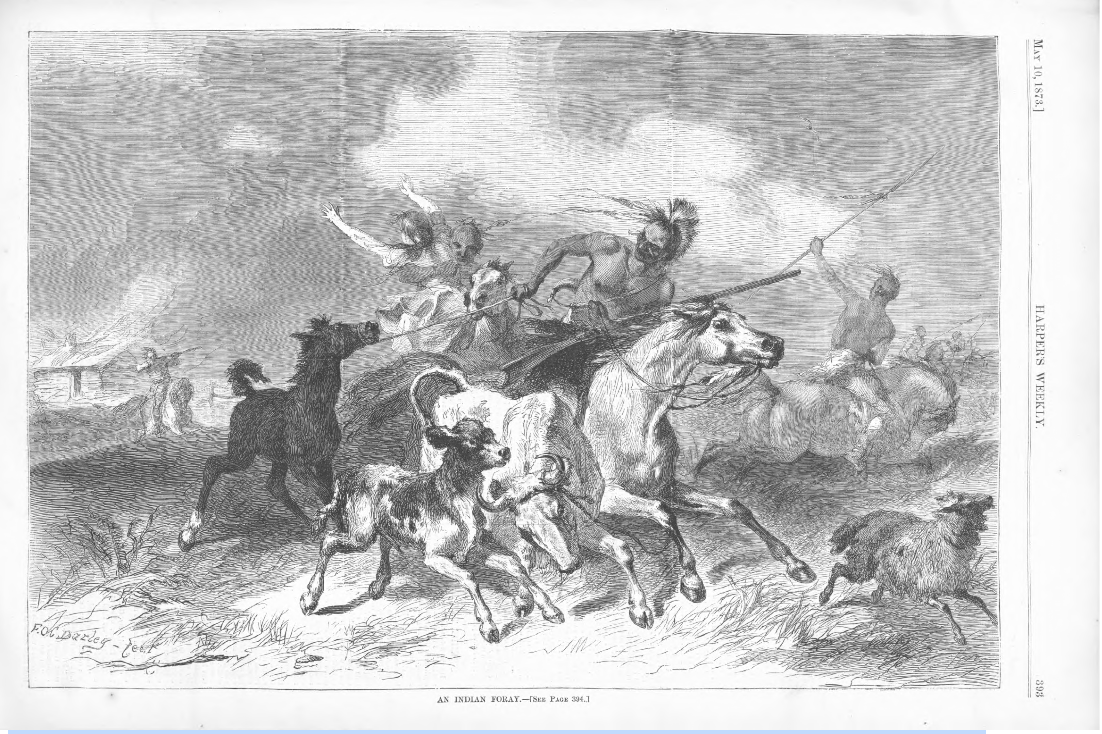
Fig. 7. F.O.C Darley, “An Indian Foray," Harpers Weekly Volume 17, May 10, 1873, p. 393.
In 1873 as well, the magazine detailed fighting with the Modoc Nation. The Modoc War, which lasted from 1872-1873 and was fought in Oregon and California, arose from conflict between the U.S. Army and a portion of the Modoc people who had refused to move to a reservation area and leave their rightful land.[21] An article about the fighting read: “Once more the untamable fury of the savage blood has been illustrated in the murder of the Peace Commissioners, and like wild beasts granted a temporary opportunity of mischief, the Modocs, thoughtless of the consequences, threw themselves on their victims.”[22] This was a narrative that went hand in hand with the supposed need to civilize, to Christianize, the Native populations, a “mission” used to justify the brutal injustices and violence perpetuated against the Native peoples by the white settlers. Under the section “Religious Intelligence” in July 1873, text reads: “Bishop Whipple, of Minnesota, has written an earnest letter to the Evening Post of this city, in which...the bishop claims that only such a policy as that adopted by President Grant will settle the Indian question. Under it already hundreds of Indians have become civilized and Christianized. Where six years ago you only heard the horrid sounds of the scalp dance, you now hear songs of praise and the voice of prayer.”[23]
As Paul Christendon writes in “The ‘Wild West’: The Life and Death of a Myth,” “Myth is about the formation of a national “I” pitted against a wilderness that is the national not-I, and the Indigenous people rooted there before invasion and usurpation also form the not-I to be over- come, absorbed, used as a kind of fuel in the making of the nation's self.”[24] Frenzeny and Tavernier in many ways became almost passive versions of the paradigmatic western heroes; their observance serving as a sort of conquest in and of itself, a proof of their, and the magazine’s, ability to capture and commercialize the West and its Native people for the consumption of those like the artists and the publishers who had sent them. They travelled West at a time when the West was still constantly growing in mystique and mythology. Their encounters and observances, particularly Tavernier’s recounting of the Sun Dance, contributed to strengthening the association, already pervasive, between the “wildness” and “foreignness” of the West and its Indigenous peoples that had made the Native populations the “not-I to be overcome” and forcibly and violently restricted from their lands and way of life.[25] Tavernier had clearly fancied himself some sort of mythological hero, an artistic Aeneas, as he ventured into the unknown in 1874, writing to his mother, “I am about to cross one of the wildest regions (of the West), where no artist has gone yet...If I come back in one piece, I hope to earn a small fortune with these sketches."[26]
Print culture of the late 1800s had an ever-growing fascination with the American West and particularly the encounter with its Native population. Literature was increasingly rife both with the saintifying and dehumanizing “noble savage” trope and with the bloodthirsty, antagonistic depiction of Native Americans as brutal obstacles for their white, male heroes to conquer. The beginning of the Beadle Dime Novels, the first of which was published in 1860, solidified this stereotype of the “savage” Indigenous character in print culture.[27] Tavernier and Frenzeny’s journey, posed as an objective, truth-finding mission, served to heighten the fascination with the “wild” aspects of the West. As fact and fiction blurred together side by side in Harper’s Weekly’s issues, their journalistic account in the context of the publication helped give weight to the existing biases of their audience. Even photography is, of course, far from an impartial medium, but when illustration was the only means of communicating images to readers, fact and fiction had no visual distinction. Illustrations of fictional tales of Indigenous violence and abduction were printed in just the same style as supposedly realistic images. And Frenzeny and Tavernier’s own sketches, despite the truth claims of their journalistic venture, were created by two particular men with specific viewpoints and biases, inherently inextricable from their works themselves.
Endnotes
Claudine Chalmers, Chronicling the West for Harper's: Coast to Coast with Frenzeny & Tavernier in 1873-1874 (Norman: University of Oklahoma Press, 2013), 13. ↩︎
Chalmers, Chronicling the West, 9, 3. ↩︎
“Portfolio 2: Pictorial Journalism,” Portfolio 2: Pictorial Journalism (Prints and Photographs: An Illustrated Guide) (Library of Congress, December 5, 2017), https://www.loc.gov/rr/print/guide/port-2.html#:~:text=The first photograph published in,Graphic on March 4%2C 1880. ↩︎
Chalmers, Chronicling the West, 4. ↩︎
Chalmers, Chronicling the West, 9. ↩︎
Ibid. ↩︎
Chalmers, Chronicling the West, 5, 7-8. ↩︎
"Sunday on the Canal (from ‘Harper's Weekly’),” metmuseum.org (The Met), accessed March 7, 2021, https://www.metmuseum.org/art/collection/search/348789?searchField=All&%3BsortBy=Relevance&%3Bft=Paul%2BFrenzeny&%3Boffset=0&%3Brpp=20&%3Bpos=1.; Chalmers, Chronicling the West, 8. ↩︎
Chalmers, Chronicling the West, 13. ↩︎
“Emigrant Life,” Harper's Weekly, January 24, 1874, p. 78. ↩︎
Chalmers, Chronicling the West, 52. ↩︎
Chalmers, Chronicling the West, 53. ↩︎
Chalmers, Chronicling the West, 162.; It should be noted, to avoid any confusion, that all works by Frenzeny and Tavernier during their 1873-1874 journey, including images made while travelling separately at various points, still have the signature of both artists. ↩︎
Paul Frenzeny, “Driven from Their Homes,” Harper's Weekly, April 11, 1874, p. 321. ↩︎
Chalmers, Chronicling the West, 172, 182. ↩︎
Paul Frenzeny, “Sketches in the Far West,” Harper's Weekly, March 21, 1874, p. 260. ↩︎
Chalmers, Chronicling the West, 162, 164. ↩︎
Chalmers, Chronicling the West, 161. ↩︎
Jules Tavernier, “Indian Sun Dance,” Harper's Weekly, January 2, 1875, p. 10. ↩︎
“The Indian Question,” Harper's Weekly, October 18, 1873, p. 922. ↩︎
Stephen R. Mark, “Modoc War,” The Oregon Encyclopedia, May 28, 2018, https://www.oregonencyclopedia.org/articles/modoc_war/#.YEU4SJNKhQI. ↩︎
“The Modocs,” Harper's Weekly, May. 3, 1873, p. 364. ↩︎
“Religious Intelligence,” Harper's Weekly, July. 5 1873, p. 574-575. ↩︎
Paul. Christensen, "The "Wild West": The Life and Death of a Myth,” Southwest Review 93, no. 3 (2008): 310-25, Accessed March 7, 2021, http://www.jstor.org/stable/4347291, 310. ↩︎
Ibid. ↩︎
Chalmers, Chronicling the West, 164. ↩︎
Henry Nash Smith, "The Western Hero in the Dime Novel," Southwest Review 33, no. 3 (1948): 276-84, Accessed March 7, 2021, http://www.jstor.org/stable/43463393, 276. ↩︎
Bibliography
Chalmers, Claudine. Chronicling the West for Harper's: Coast to Coast with Frenzeny & Tavernier in 1873-1874. Norman: University of Oklahoma Press, 2013.
Christensen, Paul. "The "Wild West": The Life and Death of a Myth." Southwest Review 93, no. 3 (2008): 310-25. Accessed March 7, 2021. http://www.jstor.org/stable/43472911.
“Emigrant Life.” Harper's Weekly Volume 18, January 24, 1874. https://babel.hathitrust.org/cgi/pt?id=mdp.39015030616430&view.
Frenzeny. Paul. “Sketches in the Far West.” Harper's Weekly Volume 18, March 21, 1874. https://babel.hathitrust.org/cgi/pt?id=mdp.39015030616430&view.
Frenzeny, Paul. “Driven from Their Homes.” Harper's Weekly Volume 18, April 11, 1874. https://babel.hathitrust.org/cgi/pt?id=mdp.39015030616430&view.
Jules Tavernier. “Indian Sun Dance.” Harper's Weekly Volume 19, January 2, 1875. https://babel.hathitrust.org/cgi/pt?id=mdp.39015030616422&view.
Mark, Stephen R. “Modoc War.” The Oregon Encyclopedia, May 28, 2018. https://www.oregonencyclopedia.org/articles/modoc_war/#.YEU4SJNKhQI.
“Portfolio 2: Pictorial Journalism.” Portfolio 2: Pictorial Journalism (Prints and Photographs: An Illustrated Guide). Library of Congress, December 5, 2017. https://www.loc.gov/rr/print/guide/port-2.html#:~:text=The%20first%20photograph%20published%20in,Graphic%20on%20March%204%2C%201880.
“Religious Intelligence.” Harper's Weekly Volume 17, July. 5 1873. https://babel.hathitrust.org/cgi/pt?id=mdp.39015027796633&view.
Smith, Henry Nash. "The Western Hero in the Dime Novel." Southwest Review 33, no. 3 (1948): 276-84. Accessed March 7, 2021. http://www.jstor.org/stable/43463393.
“Sunday on the Canal (from ‘Harper's Weekly’).” metmuseum.org. The Met. Accessed March 7, 2021. https://www.metmuseum.org/art/collection/search/348789?searchField=All&%3BsortBy=Relevance&%3Bft=Paul%2BFrenzeny&%3Boffset=0&%3Brpp=20&%3Bpos=1.
“The Indian Question.” Harper's Weekly Volume 17, October 18, 1873. https://babel.hathitrust.org/cgi/pt?id=mdp.39015027796633&view
“The Modocs,” Harper's Weekly Volume 17, May. 3, 1873. https://babel.hathitrust.org/cgi/pt?id=mdp.39015027796633&view
Bibliography of Images
Fig 1: Frenzeny, Paul; Tavernier, Jules. “Scenes in Emigrant Life.” Harper's Weekly Volume 18, January 24, 1874, p. 76. https://babel.hathitrust.org/cgi/pt?id=mdp.39015030616430&view.
Fig 2: Frenzeny, Paul; Tavernier, Jules. “Leaf from a Sketch-book.” Harper's Weekly Volume 17, November 8, 1873, p. 993. https://babel.hathitrust.org/cgi/pt?id=mdp.39015030616430&view.
Fig 3: Frenzeny, Paul; Tavernier, Jules. “In the Indian Territory.—A Leaf from our Artist’s Sketch-Book) Harper's Weekly Volume 19, May 15, 1875, p. 396. https://babel.hathitrust.org/cgi/pt?id=mdp.39015030616422&view
Fig. 4: Frenzeny, Paul. “Driven from Their Homes—Flying from an Indian Raid." Harper's Weekly Volume 18, April 11, 1874, p. 321. https://babel.hathitrust.org/cgi/pt?id=mdp.39015030616430&view.
Fig. 5: Frenzeny, Paul. “Sport on the Plains”; “A Mormon Family Driving to Conference Meeting." Harper's Weekly Volume 18, March 21, 1874, p. 260. https://babel.hathitrust.org/cgi/pt?id=mdp.39015030616430&view.
Fig. 6: Tavernier, Jules. “Indian Sun Dance—Young Bucks Proving Their Endurance in Self-Torture." Harper's Weekly Volume 19, January 2, 1875, p. 8-9. https://babel.hathitrust.org/cgi/pt?id=mdp.39015030616422&view
Fig. 7: Darley, F.O.C. “An Indian Foray." Harpers Weekly Volume 17, May 10, 1873, p. 393. https://babel.hathitrust.org/cgi/pt?id=mdp.39015030616430&view.

